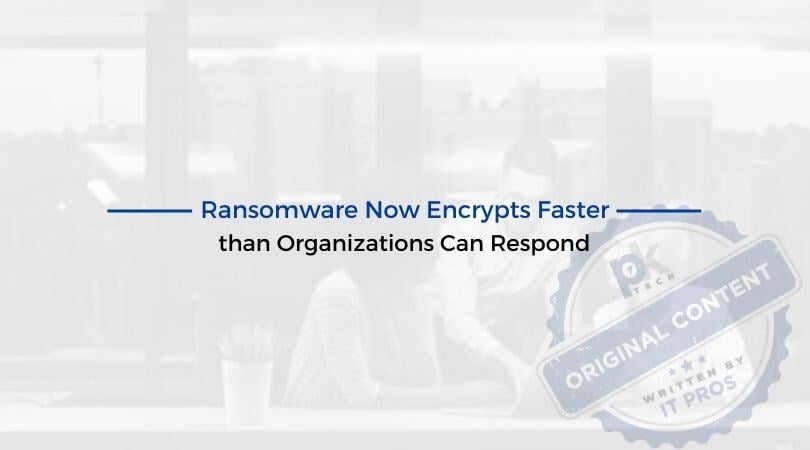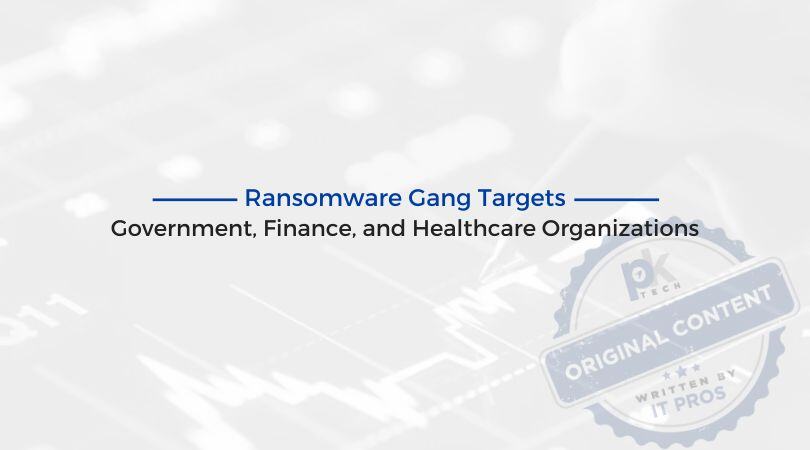Online Security Tips for Managing Your Retirement Account
You may or may not regularly think about your retirement accounts, depending on your age. Regardless of where you are at in your career, it is...
3 min read
PK Tech : October 23, 2024
-3.jpg)
When you deal in money and personal information, you might as well paint a target on your back. That’s the life of businesses in the financial services arena. Cybercriminals are bloodthirsty for the information and potential payout in these institutions.
With cyber threats becoming increasingly sophisticated and regulatory requirements tightening, data encryption has emerged as a crucial defense mechanism. For financial institutions, ensuring that encryption practices are robust and up-to-date is not just about compliance; it's about safeguarding trust and maintaining a competitive edge. Here’s a comprehensive guide to data encryption best practices for the financial sector.
Who is this guide for? Any business in the financial services sector:
If your business classifies itself as one of the above, data encryption can enhance your cybersecurity stature. These ten tips will help you understand and utilize data encryption.
Before diving into best practices, it’s essential to grasp the fundamentals of data encryption. At its core, encryption transforms readable data into an unreadable format using algorithms and keys. Only those with the appropriate decryption key can convert it to its original form. This process ensures that even if data is intercepted, it remains unintelligible to unauthorized parties.
Not all encryption algorithms are created equal. Financial services should adhere to industry standards and use robust encryption protocols. AES (Advanced Encryption Standard) with a key size of 256 bits is widely recommended for its strength and efficiency. Avoid deprecated algorithms like DES (Data Encryption Standard) and opt for modern, secure alternatives.
Data encryption should be applied to data both at rest (stored data) and in transit (data being transmitted). Encrypting data at rest protects it from unauthorized access in case of breaches or theft. Encrypting data in transit safeguards it while it travels across networks. Use secure communication protocols like TLS (Transport Layer Security) to protect data during transmission.
Encryption keys are the cornerstone of your encryption strategy. Protecting these keys is just as critical as encrypting the data itself. Use hardware security modules (HSMs) or key management services (KMSs) to generate, store, and manage encryption keys. Ensure that key access is tightly controlled and that keys are rotated regularly to minimize risk.
The field of cybersecurity is dynamic, with new vulnerabilities and threats emerging constantly. Keep encryption protocols up to date by applying the latest patches and updates. Stay informed about advancements in encryption technology, and be prepared to upgrade your systems as necessary.
Regular security audits and penetration testing are essential to identify and address potential weaknesses in your encryption strategy. Engage with third-party experts to perform thorough assessments and provide recommendations for improvement. These practices help ensure that your encryption measures are effectively mitigating risks.
Human error can often be the weakest link in cybersecurity. Regular training and awareness programs for staff can help mitigate risks associated with encryption mishandling. Ensure that employees understand the importance of encryption, how to handle encrypted data properly, and the potential consequences of breaches.
Financial services are subject to a range of regulatory requirements concerning data protection and encryption. Familiarize yourself with relevant regulations such as GDPR (General Data Protection Regulation), PCI-DSS (Payment Card Industry Data Security Standard), and others that apply to your region or sector. Compliance not only helps avoid legal repercussions but also reinforces your commitment to data security.
Data backups are crucial for recovery in case of data loss or corruption. Ensure that backup data is also encrypted and stored securely. Regularly test backup processes to ensure that encrypted backups can be reliably restored when needed.
Even with the best encryption practices, breaches can still occur. Having a robust incident response plan in place is vital. Your plan should include procedures for identifying, containing, and mitigating breaches, as well as communication strategies for informing stakeholders and regulatory bodies.
Data encryption is a critical component of any financial institution’s cybersecurity strategy. It’s a tool every business in the financial services sector should capitalize on – no exceptions. Protecting your data has significant implications for security and client trust.
By implementing strong encryption standards, managing keys securely, and staying compliant with regulations, financial services can significantly enhance their data protection efforts. Remember, encryption is not a one-time fix but an ongoing process that requires vigilance, regular updates, and continuous improvement.
If you have questions about ensuring encryption as a fundamental pillar of your data protection strategy, PK Tech is here to help. As a managed IT service provider, we proudly offer 15 years of experience focusing on the financial services sector. We boast AICPAs SOC 2 Type II attestation, proving via third-party audit by an independent CPA firm that we passed a rigorous and comprehensive assessment of our security and privacy controls. With dedicated experience working with countless financial services firms in the Greater Phoenix Area, we have the knowledge and strategy to craft a proactive security structure to defend against your vulnerabilities.
Schedule a time to chat with our team here.

You may or may not regularly think about your retirement accounts, depending on your age. Regardless of where you are at in your career, it is...

In a recent new study, results found that new ransomware can encrypt at a rate of 54 GB in 43 minutes. Considering that most compromises take roughly...

Pysa ransomware, which became the dominant strain behind file-encrypting attacks last November, with a 400% rise in attacks on government...